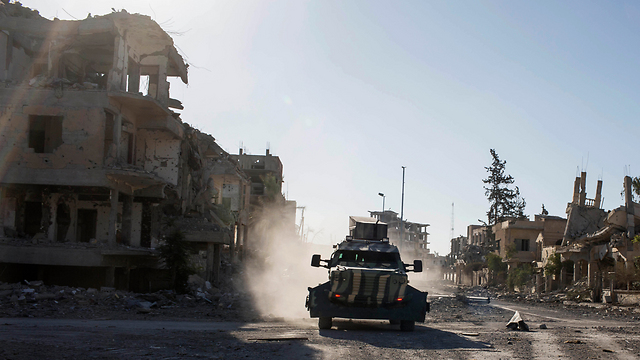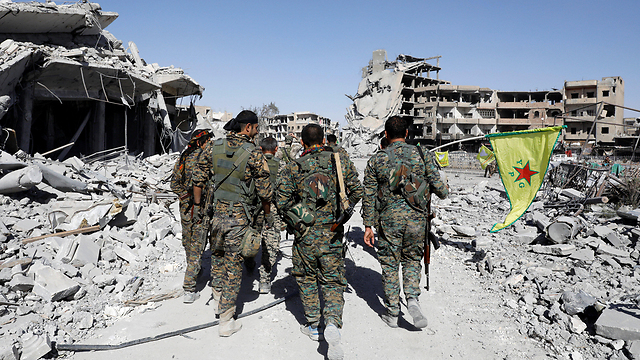
ISIS fighters in Iraq
Photo: Reuters

Prof. Isaac Ben-Israel
Photo: Yotam Frum

The self-destruction mechanism of terror
Op-ed: Less than four years after its official establishment, ISIS seems to be approaching its end. How did it happen? Once terror crosses a certain line, it sets in motion a self-destruction mechanism and undermines its own goal. The organization’s intimidation efforts were so successful, that the entire world teamed up to destroy it.
Following the fall of the city of Raqqa—the
Islamic State’s capital in Syria—to US-backed militias, the ISIS terror organization seems to be approaching its end. So ahead of the (almost absolute) elimination of ISIS, one universal conclusion can already be drawn in regards to the efficiency of terror: It’s a self-destructing phenomenon.
ISIS is a relatively new movement. Its roots go back to the American invasion of Iraq in 2003 and the collapse of the Iraqi army. Some of the former army members brought an old idea back to life: Not the Muslim Brotherhood’s original idea to clear the formerly Muslim area of foreign “crusader” elements, but the creation of a caliphate—an Islamic state governed by religious laws.
Like many organizations that came before it, ISIS made massive use of the weapon of terror, which aims to terrorize the enemy and force it to change its ways in favor of a new vision. The aim justifies the means, especially harming civilians who are uninvolved in the fighting.
The enemies are of course the “heretics,” primarily the “internal” heretics—Sunni Muslims who do not obey the sharia laws in letter and spirit. They are followed by the Shiites, while the Christians and Jews are only at the bottom of the list.
At first, the idea seemed to be gaining popularity across the Muslim world: The organization managed to create a religious Islamic state in parts of Iraq and Syria, established branches (“districts”) across the Middle East and received an inflow of volunteers even from Europe and America.
But today, less than four years after its official establishment, there is hardly any trace of all that: The Islamic state has been destroyed, most ISIS fighters have either been killed or escaped, and the organization’s terrorist activity has become similar to the activity of dozens of other organizations. The caliphate idea wasn’t destroyed of course—ideas cannot be destroyed—but the Islamic state nearly disappeared.
Why did it happen? There are many reasons, of course, but the main reason is simple: The entire world joined forces to destroy ISIS and created a coalition led by the United States and its Western allies, Russia, china and the Sunni Arab states. They all teamed up to destroy the organization. That being the case, the question is why didn’t it happen with other murderous terror organizations as well?
Well, one of the main reasons for that is ISIS’s success in distributing its terror videos on social media. The organization wanted to intimidate—and succeeded beyond all expectations. As a result, the world was so afraid that it had no choice but to come together and destroy ISIS, with each terror attack adding more countries to the coalition against the organization.
This verifies an old rule formulated by well-known strategist Carl von Clausewitz (who spoke about a guerilla war, but the conclusion is similar): Whoever uses these methods must not exaggerate and issue too many threats. Why? Because the other side is naturally stronger, and it will only make it use its full force. That’s what happened to ISIS, and it has been happening for years in Israel in the face of Palestinian terror, which has only made more and more Israelis radicalize their opinions against the Palestinians.
So at the end of the day, terror is an inefficient and even foolish strategy. It can be bothersome and painful, but once it crosses a certain line—it basically sets in motion a self-destruction mechanism and undermines its own goal.

















